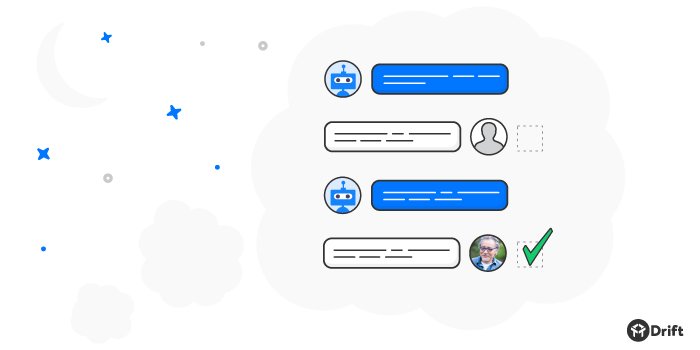
You don’t have to be a marketer to know that billions of dollars are spent every year on advertising ??
Look at your phone. Look out the window. Look at the sponsored ads in your personal email.
Ads are part of our every day.
In a previous article, I wrote how digital advertising now accounts for more than 60% of all ad spend. By 2023, that spending will reach $517.51 billion (up from $384.96 billion this year).
Despite the growing investment in PPC, marketers aren’t seeing a consistent return – especially in the B2B space. In the Conversational Marketing Blueprint, we reported that B2B businesses spent over $5.12B to drive traffic to their websites in 2018 alone, according to eMarketer. Of those ad dollars spent, only 1-2% of ad traffic typically converts.
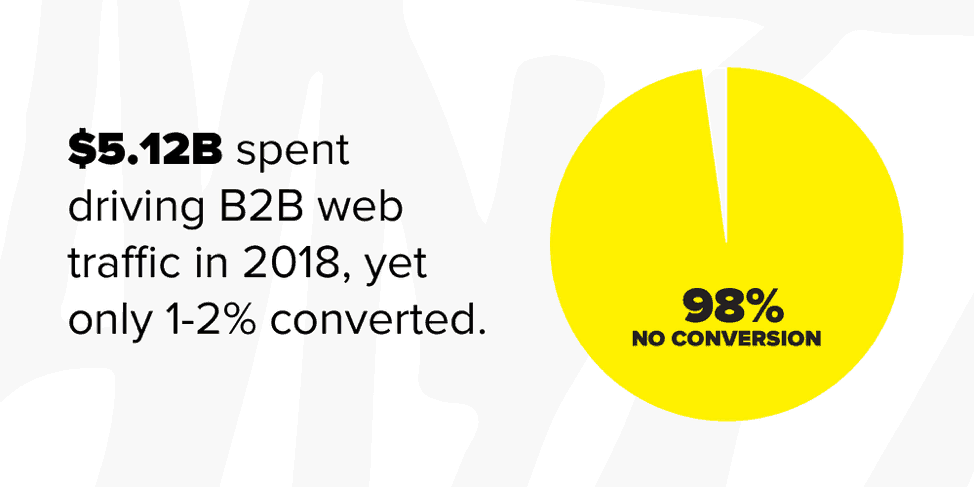
Source: The Conversational Marketing Blueprint
So, why are marketers seeing such an inconsistent ROI for their digital advertising? Let’s dig in ?
The Digital Advertising Model is Broken
Introducing Conversational Marketing For Digital Advertising
The Digital Advertiser’s Toolkit: A Guide To MarTech
How WebPT Tripled Their Monthly Chat Leads For Paid Search Using Conversational Marketing
The Digital Advertising Model is Broken
Many traditional advertising best practices – and for that matter inbound marketing best practices – are dated. Marketing and sales teams are still using inbound tools that remove personalization from interactions and introduce friction during the handover to sales.
Here we have a typical ad flow example for a demo:
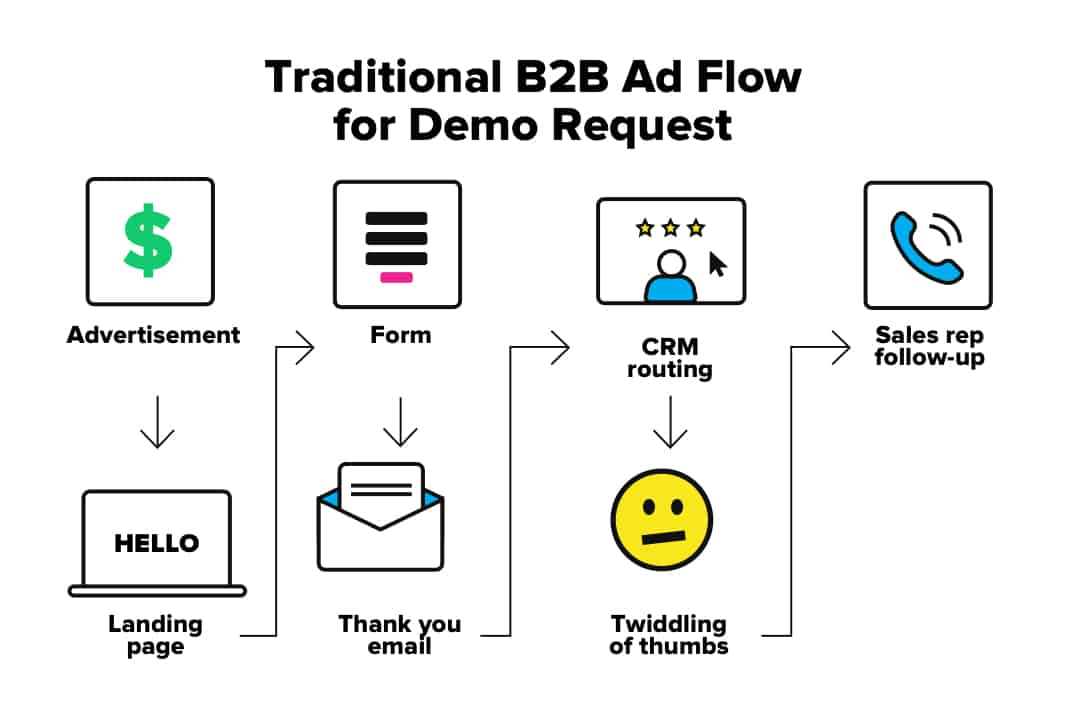
The above process alone takes about 6 to 7 touches before a potential customer even speaks to someone in sales.
Convoluted processes are one of the key pain points of today’s digital advertising campaigns. But there are a lot of headaches digital marketers run into when launching paid ads. Let’s start with the monster we know.
CRM Routing & Sales Disconnect
In the book The MQL is Dead, Drift’s VP of Demand Generation, Kate Adams, lays out the key problems a process like the one shown above has on the marketing and sales funnel: It’s convoluted.
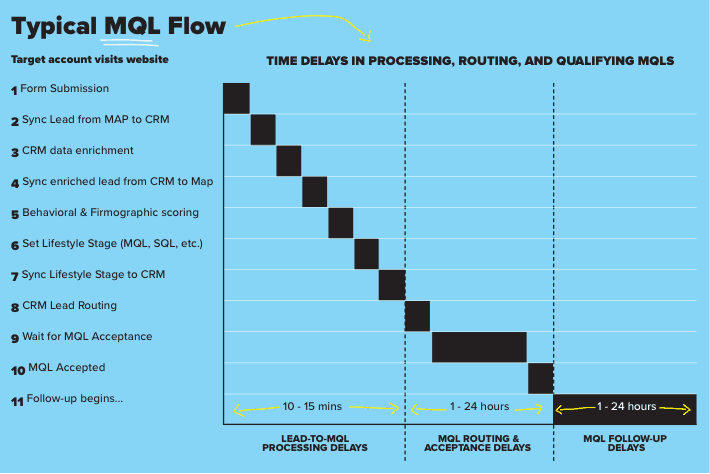
Almost 24 hours or more can pass between form submission to CRM routing to MQL follow-up from a salesperson for a demo.
But 24 hours might even be too generous. In Drift’s Lead Response Time report, we investigated the response time on forms for over 500 B2B companies. The result? 42% of B2B companies didn’t respond to our form request within a five-day timeframe. 58% didn’t respond AT ALL.
Increased Costs, But Clear Value If Executed Well
There’s a growing price of admission for online advertising. An explosion of competition and options has increased keyword costs and cost per lead. While $2.69 remains the average cost per click (CPC) for Google paid search, in some industries CPC has reached well above $4.00. But the benefits of a successful ad campaign are undeniable.
According to Google, for every $1 spent in Google ads, businesses get $2 back. So the value is clearly there – if the campaign is executed properly.
Poor Understanding of Root Cause
It was John Wanamaker that said it best: “Half the money I spend on advertising is wasted; the trouble is that I don’t know which half.”
Understanding the root cause behind ad performance can be easier said than done. If clicks are low, maybe it’s ad copy or the image used or the position of the text. If it’s landing page abandonment, maybe it’s the messaging or the page layout, or the form. Without the ability to test all these theories, digital marketers are stuck trying one possible solution at a time. Not ideal.
Channel Overload
From paid search to paid display to paid social, the channels available to marketers have grown exponentially. This has led to even more variability when it comes to launching ads online, like:
- Deciding which channels resonate with your ideal customer profile (ICP)
- Deciding what offers work best for what channel
- Understanding the nuances of each platform
- Learning what “good” performance looks like on each channel
Looking at the above laundry list of concerns can be daunting. There’s a lot to consider, and a lot of value on the line if you get it wrong.
But there is a path forward. And it starts with one thing: customer-centricity.
How To Fix What’s Broken
As marketers, we’ve stepped on our own feet:
- We’ve made it difficult for buyers to talk to us…by siloing them behind a marathon of touchpoints and tech before they even get to a human.
- We’ve made it difficult for our salespeople to reach buyers…by introducing processes that are more cumbersome than pre-internet door-to-door sales.
We’ve also lost sight of a critical component in advertising: emotion.
To get a person to click on your ad, you have to elicit some kind of emotional response. That emotion will vanish the moment they look at a landing page with generic, non-relevant messaging and static, lengthy forms.
That’s why marketers need to begin transitioning to a more customer-centric approach.
Customer-centricity demands more of businesses when it comes to interacting with their customers and prospects. In a customer-centric PPC strategy, marketers provide would-be customers with engagement that is:
- Relevant
- Authentic
- And real-time
At Drift, we call this frictionless process conversational marketing.
Introducing Conversational Marketing For Digital Advertising
Conversational marketing is about getting buyers in touch with the right people at your company, without all the days of follow-up, and starting real-time conversations.
When using conversational marketing for digital advertising, the mission is the same: providing hyper-personalized messaging, experiences and conversations for buyers in real-time.
Below we see how introducing chat directly on a page can reduce 50% of the hoops buyers need to jump through to speak with you.
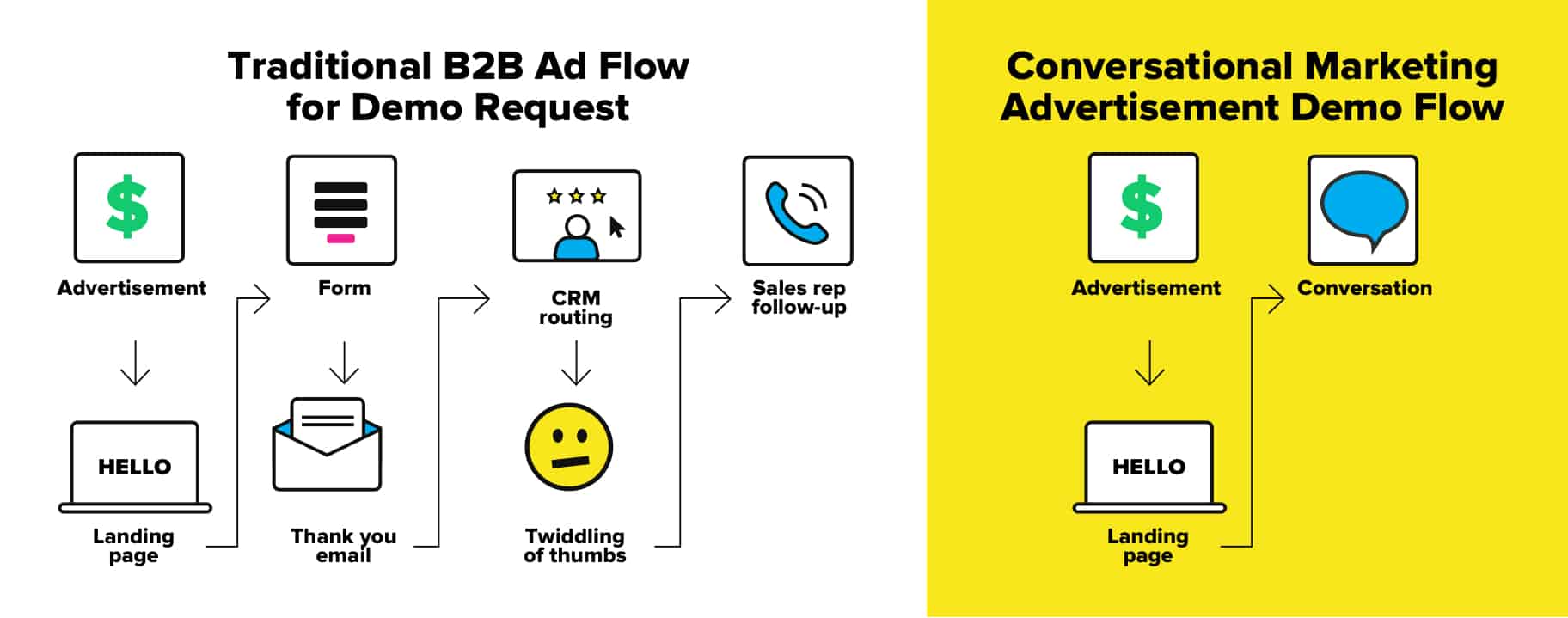
The beauty of the above model is that it:
- Removes the number of touchpoints to meaningful conversations
- Reduces the time to convert
- Introduces authenticity into the sales process from first contact
Most of all, this approach also plays into the customer-centric principles of the conversational marketing and sales model laid out in the blueprint mentioned earlier.
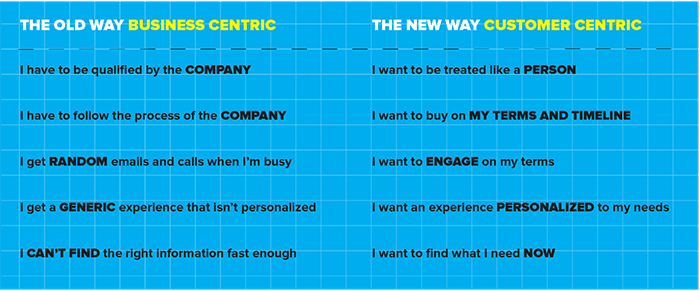
This push from business-centric to customer-centric is happening across industries. According to Gartner, one of the top three priorities for marketing leaders is investing in technologies that support the customer experience.
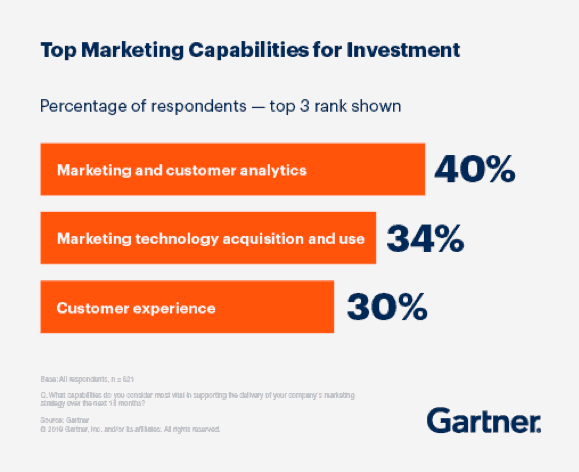
Source: “Customer Experience: Increase customer loyalty and advocacy with smart strategy and investment”, Gartner
At Drift, we’re huge proponents of ensuring a frictionless customer experience. From automation to chat to video to email – we’re building products that move the needle forward and improve the interactions between the buyer and company.
One area we found particularly painful for marketers was the dropoff in PPC campaigns from ad to offer. So we decided to do something about it.
To provide a second net to forms and customized messaging based on ad campaigns, we developed the Paid Ad Conversion bot.
This Driftbot provides two big solutions for digital advertisers:
- Targeted messaging: Companies can target visitors coming in from specific PPC campaigns and channels. This means more granular messaging for buyers. Marketing and sales teams can personalize a chat based on an ad campaign, a keyword or the origin your visitors are coming from.

- Real-time connection to sales: While we no longer use forms at Drift, we understand that this isn’t for everyone. That’s why a lot of companies use chatbots as a second net to their forms. This allows potential customers to choose how they want to initiate a conversation.
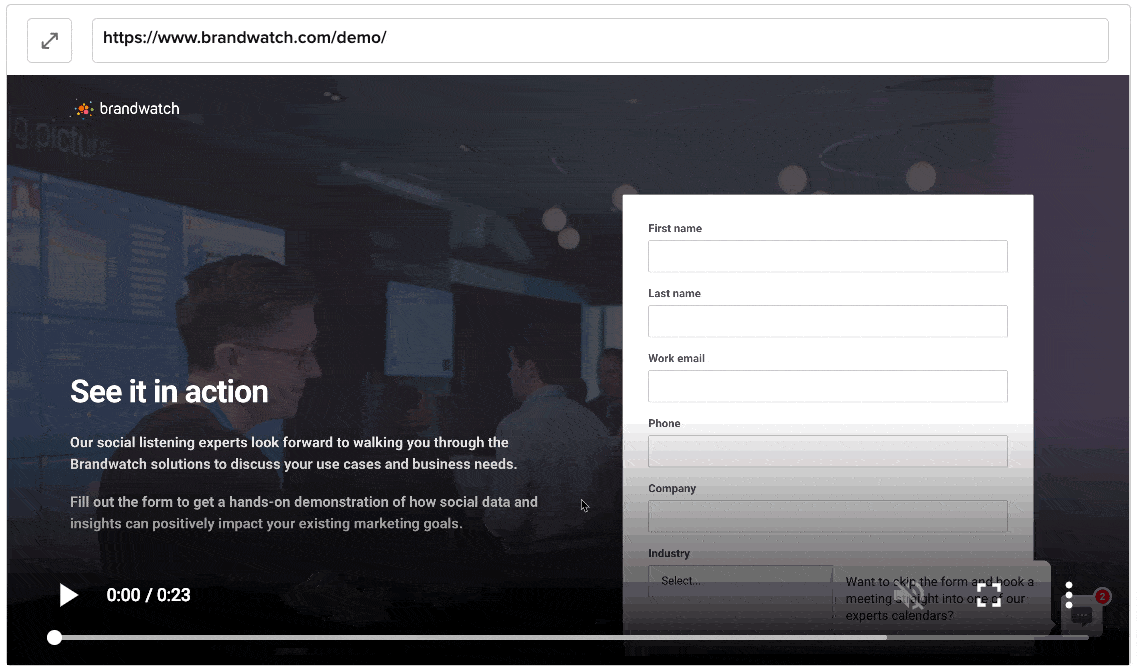
Using conversational marketing and the Paid Ad Conversion bot, digital marketers can:
- Take an informed approach to digital advertising
- Increase conversion rates
- Improve messaging and lead quality
- Decrease costs per lead
- Increase ROI
Danielle Gonzales reported big wins with her customers at Hanapin Marketing when coupling conversational marketing with PPC initiatives:
- Increase in demos: 72% of web users who submitted their contact details also booked a demo on the spot
- Improved lead quality: Their CPLs rose by 45%
If someone comes to the site, they can learn if the product isn’t right for them within a few questions and likely won’t continue the conversation long enough to submit their contact info. The ones who do move forward with their contact info are better informed and are more likely to be a sales qualified lead. Since its inception on my client’s website, 72% of the website users who got to the point of submitting their contact info also booked a meeting for a demo on the spot. This is a tremendous success rate for qualified leads.
– Danielle Gonzales, Account Manager, Hanapin Marketing
The Digital Advertiser’s Toolkit: A Guide To MarTech
Understanding and managing digital ad performance can be challenging without the right tools. Sure, there are ways to narrow down the reason behind the results you’re seeing, but there are a million possible solutions to get you where you want to be. What’s the right one for you?
Many digital marketers now rely on tools that let them experiment with multiple solutions at a time.
Experimentation is critically important to running a successful digital advertising program.
Companies like Microsoft have 100+ people running continuous experiments on their landing pages. Back in 2013, the team ran an experiment for Bing on the text color in titles. Using the data of over 32 million users, they rolled out a color change that would add more than $10 million in revenue annually.
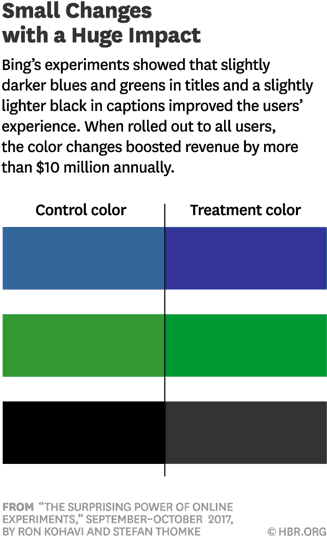
But…most marketing teams don’t have Microsoft’s resources.
Luckily, experimentation isn’t out-of-reach. Today, third-party software providers have made digital advertising experimentation and optimization achievable for every company.
Using Drift in unison with tech like Unbounce, Optimizely, Marketo, Intellimize, etc., can dramatically scale and optimize digital advertising programs.
A/B Testing & Landing Page Customization
In a recent Gartner report, 87% of marketing leaders reported using personalization as part of their marketing strategy.
With Drift, companies can customize messaging for chat based on the source channel. For example, if a buyer comes in from a Google search ad.

To personalize even more, companies use Drift alongside A/B optimization tools like Unbounce and Optimizely.
Using Drift’s integration with Optimizely enables companies to test multiple chat messages across a landing page. This allows teams to experiment with what message has the best impact on conversion all at once.

With Unbounce, companies can A/B test landing pages. Below is an example of Drift and Unbounce in action. Here, the buyer is coming from a Google ad, which changes both the message in the chat and the message on the landing page.

This kind of dynamic experimentation is really helpful for digital marketers trying to scale and act quickly.
Account-Based Marketing
Account-based marketing (ABM) isn’t anything new. Like conversational marketing, it has taken the inbound model and given it a much needed granular makeover.
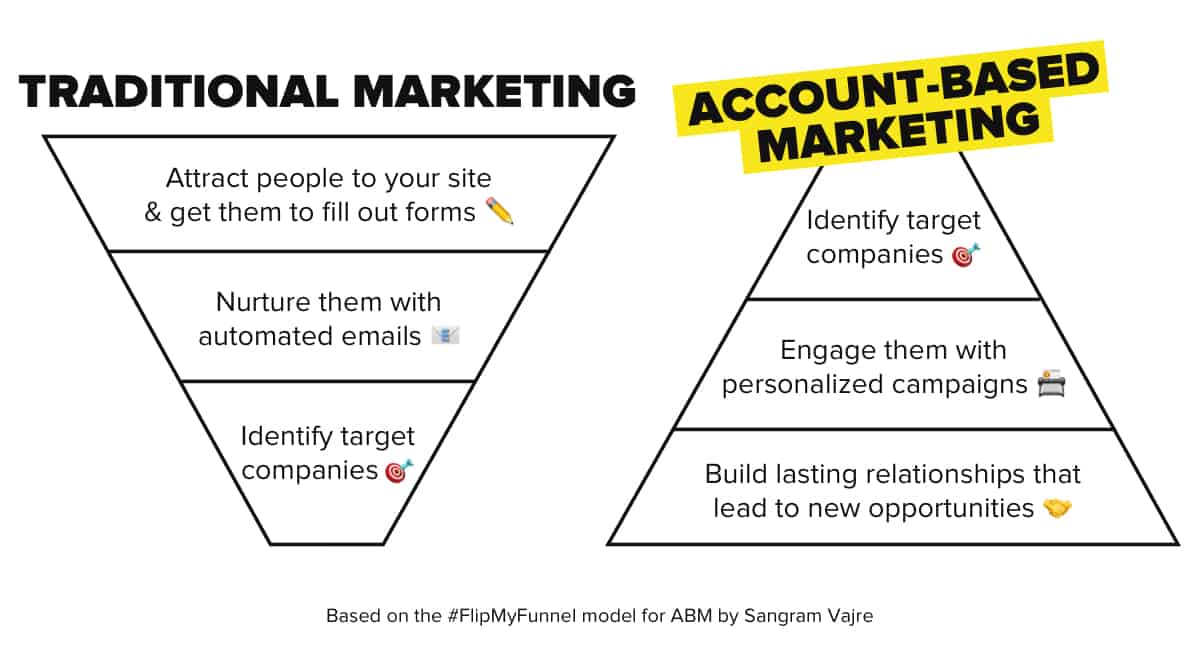
A lot of today’s targeted digital ad campaigns also use ABM to narrow the scope of their audience and outreach. This not only helps reduce overspending, but focus messaging.
But what does a perfect ABM ad campaign look like?
Let’s walk through an example.
Say you’re running an ad campaign on LinkedIn for target accounts. LinkedIn is generally a more expensive channel for advertisers. Minimum bids start at $2 CPC, where on Google the cross-industry average sits at $2. So digital marketers want to be as focused as possible with their ad spend on this platform. ABM is a great way to do that.
In partnership with sales, you start by preparing a CSV file of the accounts you’re looking to go after. You then upload a list of ideal customer profile (ICP) companies you’re targeting, and also any accounts that may match those on your list.

There are a few enterprise accounts on that list, so you decide to test some highly customized pages for a more white-glove approach. To do this, you use Optimizely to cater the messaging for these companies. Below we see an example of this in action where the design and messaging on the page are customized for this specific account – in this case, Microsoft.
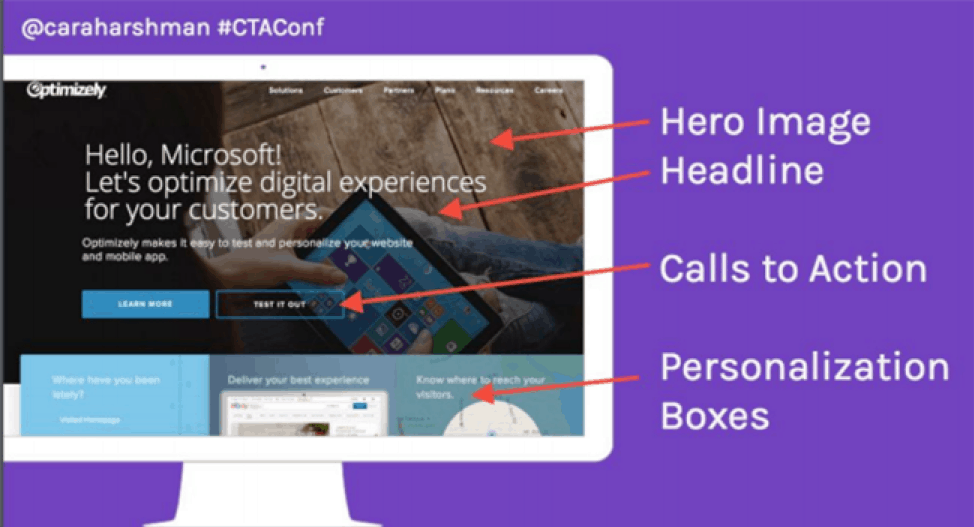
Source: Unbounce, How to Predictably Fill Your Funnel Using Account-Based Marketing
Next, you want to layer on a personalized playbook from Drift. You upload the same target account list from Marketo (or a marketing automation of your choosing) to the playbook.
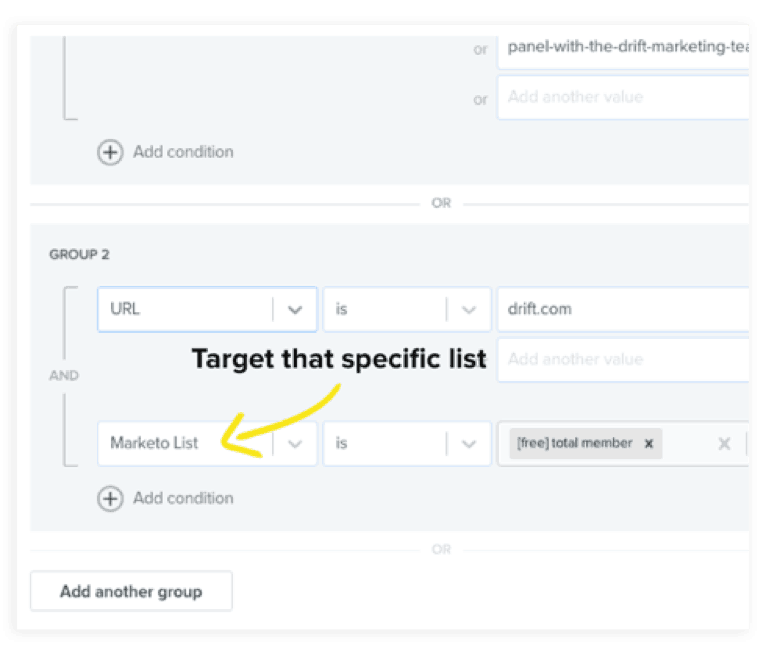
You customize the messaging with info like company name, where they are in your funnel, size, and anything else. You make sure each rep is assigned to an account and set up to be notified if a person from that company is on your site.

At first glance, this may seem like a lot to pull together, but the benefits are huge. AND, once you have the process down, it’s easy to replicate for companies you’re looking to start conversations with in the future.
How WebPT Tripled Their Monthly Chat Leads For Paid Search Using Conversational Marketing
To round out our discussion, let’s look at an actual example.
WebPT, a software provider for outpatient rehab therapy services, used both Drift and Unbounce to optimize their paid digital advertising.
The company invested heavily to show up as the top paid search for a number of keywords, including “physical therapy software.”
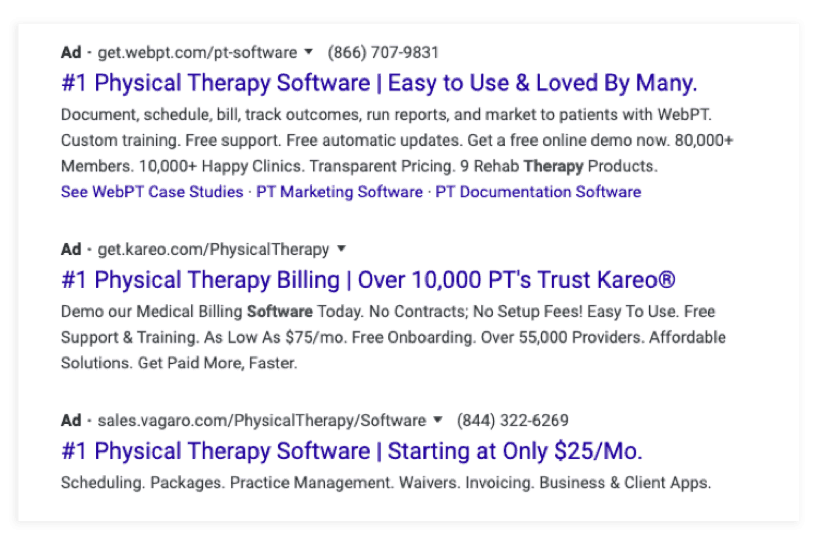
To ensure a return on their investment, they wanted to experiment with messaging.
Using Urchin Tracking Module (UTM) parameters to set up their ad campaigns, WebPT was able to not just offer custom messages, but experiment with landing pages via Unbounce to increase conversions.
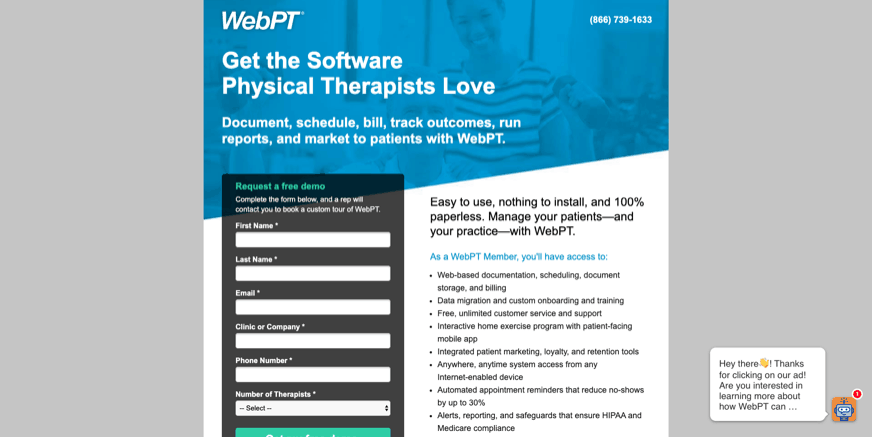
Within the first three months of implementing Drift and running their campaign, WebPT:
- Improved overall user experience on their landing pages
- Leveraged Drift to provide WebPT’s trademark quality customer service
- Tripled their monthly chat leads
- Increased MRR for paid Google and Bing ads
- Added real-time customized messaging for potential customers






